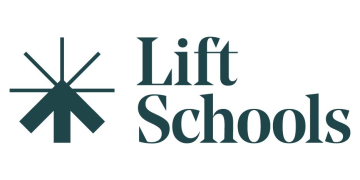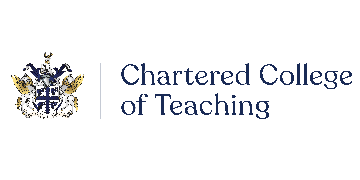The proportion of academy trusts reporting a financial deficit rose to 6.1 per cent in 2016-17 from 5.5 per cent in 2015-16, new statistics from the Department for Education have revealed.
The 185 trusts that were in deficit were responsible for 300 academies (4.3 per cent of the total), and smaller trusts were more likely to find themselves in financial difficulties.
However, 91.6 per cent of trusts managed to produce a surplus for 2016-17, while 2.3 per cent maintained a zero balance.
Matthew Clements-Wheeler, chair of the Institute of School Business Leadership and deputy head at Bordesley Green Girls School and Sixth Form, said smaller academy trusts will “struggle” to achieve the economies of scale needed to avoid a deficit situation.
“This puts them in the difficult position of having to cut elements of their provision which they consider to be vital,” he said.
“Uncertainty about employment causes staff to leave, underinvestment in curriculum resources and the teaching environment has a detrimental effect on pupils.”
Each trust should be judged on a “case-by-case basis”, he added, to identify whether any deficit is due “temporary issues” or because “the trust is structurally unsound”.
The total net deficit of academy trusts in 2016-17 was £65 million, but because other trusts had reserves of £2.5 billion in total the academies sector had a cumulative surplus of £2.4 billion. The average reserves in a trust were around £791,000.

In 2015/16 the total cumulative surplus was £2.3 billion, against a total deficit of £50 million, meaning net position for the academies sector was a reserve of £2.2 billon at the end of 2015-16.
Micon Metcalfe, chief operating officer of Langley Park Academies and a fellow of the ISBL, said: “Although there was an increase in academy trusts’ in overall deficit, the overall reserves held by trusts increased by £0.2 billion.
“This may indicate that a strategy of consolidating academy trusts into larger groups might be effective in balancing the books.”
But Clements-Wheeler argued that each trust is a “standalone entity” and should “maintain its reserves at a prudent level to be able to smooth out unforeseen circumstances or cope with cash-flow issues”.
“Reserve balances across the system are a necessary compromise in a fragmented system,” he said.
In comparison to the academies sector, 9.1 per cent of maintained schools (1,461) had a cumulative deficit in 2016-17, while 90 per cent (14,498) had a surplus and 0.9 per cent (147) broke even.
This is in part down to a greater percentage of primary (and therefore smaller) schools in the maintained sector, Clements-Wheeler said, pointing out that maintained schools also have no access to money from the government’s Condition Improvement Fund and therefore are using revenue funding to cover the costs of their capital works too.
Looking at academies and local authority maintained schools together, 7.6 per cent of schools were in deficit or were within a trust that was in deficit in 2016-17.
Mary Bousted, joint general secretary of the National Education Union, said the figures failed to represent the funding pressures of individual schools struggling with an “unsustainable” funding model.
“It is clear that the academies sector and schools as a whole are feeling the effects of an unsustainable funding model. Earlier this year some of the largest academy trusts warned in their annual accounts of the risks that they faced due to funding pressures and highlighted deficits in the individual academies they oversee,” she commented.
“The funding pressures on individual schools within trusts are not reflected in these figures. The rise in the number of academy trusts that are in deficit is another sign of the impact of the government’s cuts to school funding, cuts that will further limit pupils’ educational opportunities.”







Yet another transparent attempt to present statistics in a way that supports SchoolsWeek’s anti-academies agenda.
By every conceivable interpretation of the figures this is a good-news story for academies, which come out better than maintained schools.
What is undeniable is that all schools, academies and maintained, are subject to a very difficult financial environment where costs are increasing year-on-year and the funding is not keeping pace.
It’s not surprising therefore that the number of schools in deficit is rising. It would frankly be unbelievable if this wasn’t the case.
But academies seem to be doing ‘less badly’ than the maintained sector.
6.1% of academy trusts are in deficit, or looking at it another way 4.3% of academies are in deficit. This compares to 9.1% of maintained schools.
The increase in academy trusts in deficit rose by 0.6% last year. This compares to a rise of 3.1% for maintained schools.
And yet SchoolsWeek unsurprisingly focuses on the fact that there is a rise in academies in deficit, implying this is an academies issue. It’s only in the 14th paragraph of this article that they presumably felt they had to put some context in about maintained schools. A total of two and a half lines, which they then immediately try to explain away using Matthew Clements-Wheeler, who is frequently quoted by SchoolsWeek as opposing the academies programme.
As someone who’s views are in line with SchoolsWeek, Mr Clements-Wheeler gets seven paragraphs to express his opinions. Mary Bousted gets three paragraphs.
Congrats though to SchoolsWeek for giving a platform to someone who might have put across a different view – Micon Metcalfe. Mr Metcalfe got a whole paragraph to put across a counter point of view. Presumably that was felt to be enough.
Tiresome.
Mark- on the face of it, local authority schools come off worse when compared by the proportion in deficit: 9.1% (LA schools) v 6.1% (academy trusts).
But as noted above, academy trusts have access to funds not available to LA schools. It’s not the Condition Improvement Fund (CIF) as stated above – that’s for improvements to buildings.. In exceptional circumstances, academy trusts can receive grants to ‘stabilise’ their finances.
The DfE would not tell me how much had been given out in grants for the financial year 2017/18 nor the academy trusts receiving these grants. http://www.localschoolsnetwork.org.uk/2018/07/dfe-refuses-to-reveal-grants-to-academy-trusts-to-stabilise-finances
Local authority schools cannot receive such grants.
We should also remember that deficits in academies being transferred can be written down or even written off to make the transferred academy more attractive to take over. Deficit reduction is not included in published academy transfer figures but it can be considerable.
There’s more on academy advances and grants on LSN but I can’t provide more links because this would be stuck in moderation.
What I take from your comment is that we know an awful lot more about academy finances, even though we know there are things we don’t know, as opposed to the far murkier world of local authorities and maintained schools.
It’s back to Rumsfeld:
Academies have known unknowns.
Maintained schools have unknown unknowns.
Aaah – the Rumsfeld quote adapted to suit.
Seems to me you could bung in anything (or suggest anything) under unknown unknowns because, er, they’re not known.
My local authority (Lincolnshire) produces annual accounts which are audited.
These accounts show ‘Schools were underspent by £17.058m or 6.7% of the schools budget.’ This under spend is ring-fenced for schools to use in future years. All income and expenditure relating to maintained schools is shown in the Council’s Comprehensive Income and Expenditure Statement. Assets and liabilities, excluding non-current assets …,relating to maintained schools are included within the Council’s Balance Sheet.
LA accounts are easily available online. One of your quick internet searches should find yours.
Point of accuracy. Micon Metcalfe is not a Mr.
(I hesitate to point that out because you will probably argue with that fact – tiresome!)